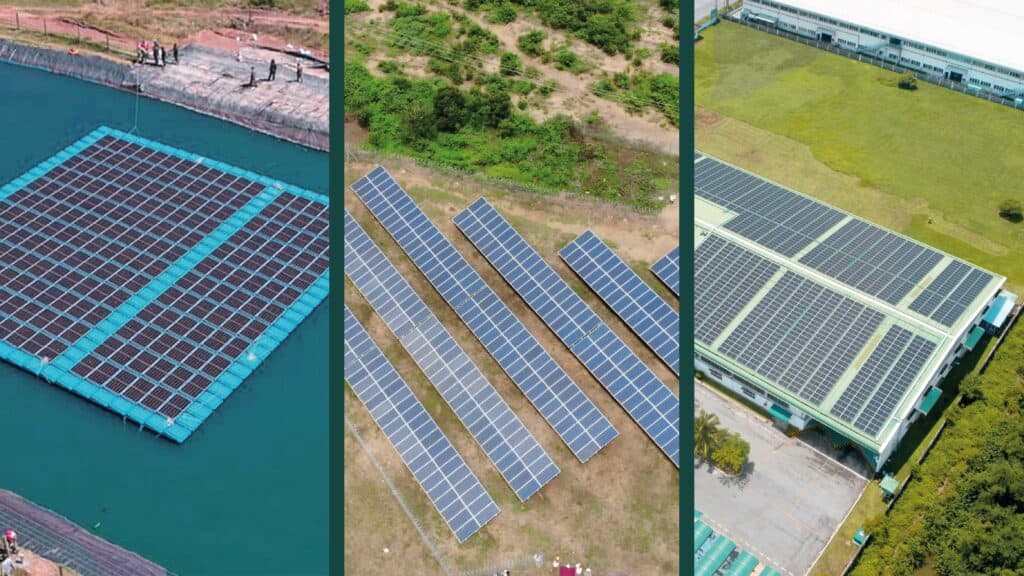Impact at ecoligo: How we calculate the CO₂ savings of our projects

Sustainability and impact are on everyone’s lips these days. There are hardly any products and services left that are not advertised as “environmentally friendly,” “sustainable” or even “climate neutral.” Most of it, unfortunately, is much less true than it is a marketing promise designed to soothe our consumer conscience and meet our demand for sustainability.
We at ecoligo are different, because for us climate protection has been mission number one from the very beginning and still is today. Nothing is more important to us than actively contributing to the reduction of CO2 emissions with our solar projects and thus making a measurable contribution to fighting climate change in emerging countries. In everything we do, we follow our four Impact Principles::

We work exclusively in emerging markets, as this is where we can make the biggest positive impact with our solar power.

We exclusively implement our own projects. This allows us to work free of middlemen and inefficiencies. This increases our impact.

We always work transparently. The CO2 savings of our projects should be presented in a comprehensible way for any interested person and always be available for viewing.

We not only promote climate protection, but also ensure sustainable economic growth at the same time, with positive consequences for the local community.
These four principles ensure that we can live up to our own aspirations and those of our partners, customers and crowdinvestors with regard to our positive impact in the world.
CO2-savings: Meaningful key figure
One aspect of our work is particularly important, both for these groups and for us, as it enables us to make our impact measurable and visible: The CO2 savings of our solar projects. By calculating the CO2 emissions that are avoided by our solar installations and will therefore never enter the atmosphere, we can make the impact of our work tangible. They enable our customers to understand how they can protect the environment despite growth and allow our crowdinvestors to track the positive impact of their investments and put it in relation to their own CO2 footprint.
Due to the enormous significance of the CO2 savings of our projects and the importance that we and our investors attach to this value, we want to present the calculation of the saved CO2 emissions and the bases and assumptions on which it is based to all interested parties in a transparent and comprehensible manner.
Initial parameters for CO2 calculation

The calculation of CO2 savings is based on several parameters. Once these have been determined for a solar installation, the actual calculations can follow.
Size of the solar plant [MWp]: The size or capacity of the solar system is customized to meet the needs of each customer. The size of the solar system is specified in megawatt peak (MWp) or kilowatt peak (kWp). The “peak” here stands for the peak or maximum power. The size of a solar system is calculated by multiplying the number of solar modules by the individual capacity of the solar modules used. Our solar systems are optimized for self-consumption. This means that the largest possible proportion of the solar power generated is consumed directly by the customer.
Self-consumption rate [%]: The self-consumption rate describes the proportion of the total solar electricity produced that is actually directly consumed. Since the feed-in of surplus electricity is prohibited by law in some project countries, the generation of the solar system is regulated down with a controller. As a consequence, only as much electricity is generated as is directly consumed. In countries with feed-in tariffs or net metering, the customer usually buys 100% of the generated electricity. The customer can feed any surplus into the grid and is compensated for it. On average, the self-consumption rate in our project countries is 88%. This means that on average 88% of the specific annual energy yield generated is used directly, thus achieving CO2 savings.
Specific annual energy yield [MWh/MWp/a]: This value, which looks complicated at first glance, defines the amount of energy that a solar system produces per installed MWp per year. This yield can vary depending on the strength of the solar radiation, the orientation of the solar system, the components used, and its age. To calculate the CO2 savings of a system, we use the specific annual energy yield calculated in the system simulation before the system is built.
Runtime of the solar plant [a]: We assume a runtime of 25 years for all our solar systems. Originally, we had assumed a runtime of only 20 years. However, experiences with solar plants from all over the world show that the runtime is at least 25 years. Accordingly, we have adjusted our calculations, but we want to remain conservative and not go beyond the 25-year term. This term is always independent of our contract term with customers. It should also be emphasized that the solar system will continue to produce electricity even after 25 years. It only reduces the amount of electricity it can produce, as described in the next point. Since the system is also fully depreciated at this point, it makes sense from a business point of view to speak of an end-of-life.
Degradation of the solar panels [%]: Degradation describes the percentage loss of power generation capacity that a solar panel, and thus the solar system, is subject to per year. For our calculations, we assume a degradation rate of 0.6% per year. This rate, which is guaranteed by the manufacturers of the solar modules used, allows us to make our calculations as realistic and at the same time conservative as possible.
CO2 emission factor [t CO2/MWh]: The CO2 emission factor describes how much CO2 was incurred in generating one megawatt-hour of electricity from the freely available power grid. This factor varies from country to country and is influenced by the country’s electricity mix. The greater the share of grid electricity from renewable sources, the lower the factor. As an example, Germany’s CO2 emission factor in 2020 was 0.366, while Vietnam’s was 0.599 t CO2/MWh.
Once all of these six baseline parameters have been determined for a solar project, the CO2 savings of the solar installation can be calculated, as well as the CO2 savings achieved relative to a determined amount of investment in the project.
The calculation of CO2 savings
To calculate the amount of CO2 saved by a solar system in its first year of operation as well as over its total lifetime, two calculations are required, each consisting of two separate steps. First, the electricity yield of the plant is always calculated in relation to the time window under consideration, followed by the actual calculation of CO2 savings.


After calculating the CO2 savings over the lifetime of the solar plant, the achieved CO2 savings per specific crowdfunding campaign for the project and per defined investment amount of the crowdinvestors can also be calculated. Since solar projects are often financed over several phases in different crowdinvesting campaigns and these campaigns have different loan terms for the investors*, these parameters have to be taken into account. The calculation is as follows:

Example calculation
Without concrete numbers and data, the calculations can be somewhat difficult to understand. However, in the context of a real project, they become somewhat clearer and easier to understand. The calculation of CO2 savings by the Olam Cocoa project illustrates the individual calculation steps:
Output parameters:
• Size of the solar plant: 1.5 MWp
• Self-consumption rate: 94,6%
• Specific annual energy yield: 1,291 MWh/MWp/a
• Duration of the solar plant: 25 years
• Degradation of the solar panel: 0,6% p.a.
• CO2-emission factor in the power grid in Ghana: 0.478515 t CO2/MWh

Protecting the climate through CO2 savings
These extensive calculations are above all an expression of one fact: that we at ecoligo strive every day to measure our impact and that of our crowdinvestors as precisely and accurately as possible and to present it as transparently as possible. And that pays off. Thanks to our calculations, we always know exactly how much positive change we have achieved together with our partners, customers and investors and can always look forward to new milestones.
For example, we know that all the projects we have signed up by the end of 2021 will save 921,100 tonnes of CO2 over their lifetime, and that each crowdinvestor and crowdfund* in 2021 will have enabled the saving of 17.6 tonnes of CO2 on average, taking into account the duration of the loan. For comparison: On average, a person in Germany causes a CO2 footprint of 7.69 tonnes per year. This is cause for celebration and at the same time a great incentive for us to achieve much more in 2022 and in all subsequent years. By 2031, we aim to achieve CO2 savings of 143 million metric tonnes through signed projects. And we are confident that we can achieve this goal.
Do you want to support us on our mission to save the planet and be able to track exactly how much CO2 emissions you will avoid with your investments? Then you too can invest in our solar projects and drive the energy transition forward!
Related Posts
The Future of Tourism is Green: How Your Investment in Condovac Makes the Vision of a Sustainable Hotel Facility a Reality
Costa Rica – A pioneer in sustainable tourism The philosophy of Costa Rica – PURA VIDA – the pure life presupposes an…


